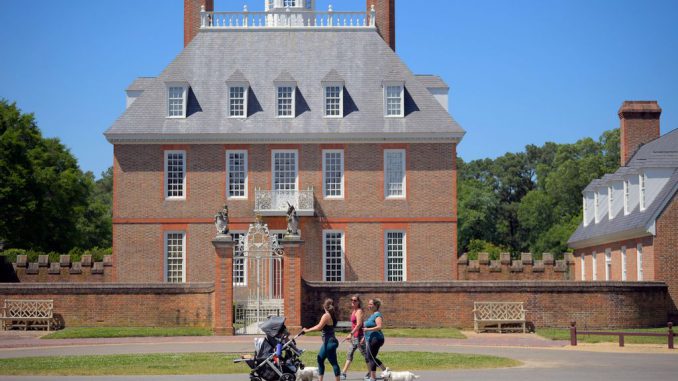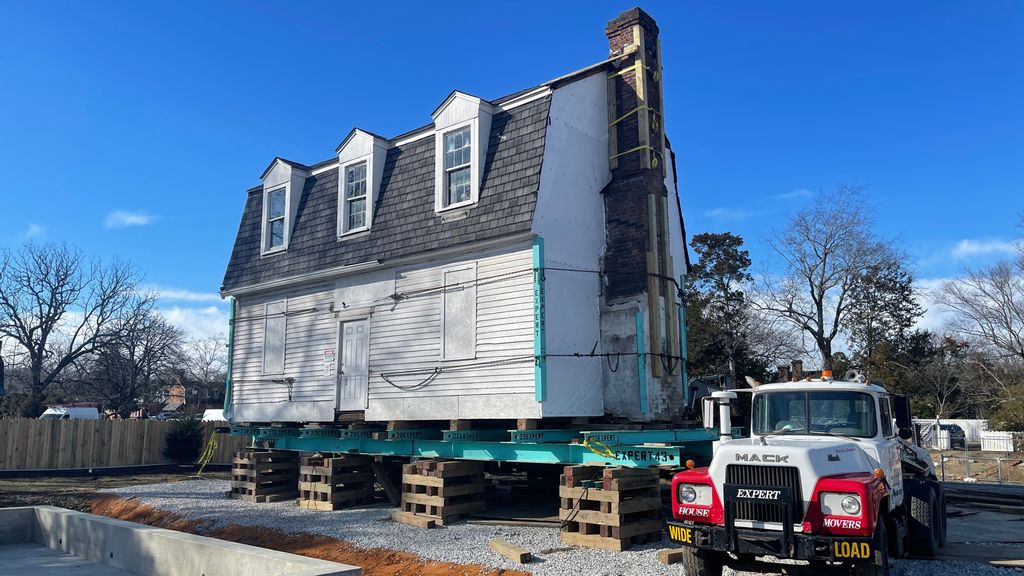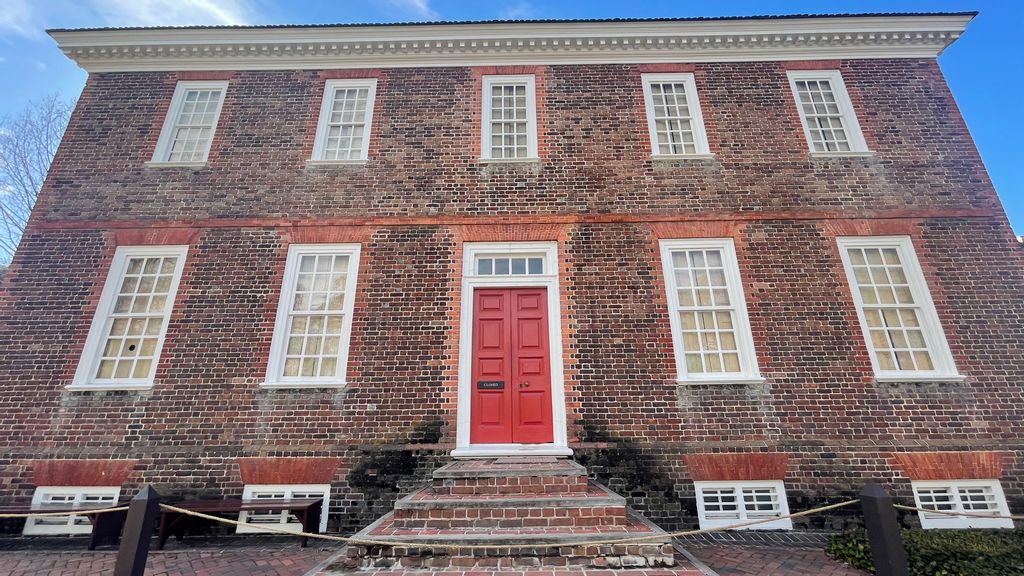
A multi-ton of African-American history moved more than a mile to colonial Williamsburg this past week — revealing a more complicated history of race in America than some pundits admit.
The Bray School is the oldest building dedicated to the education of African-American children in the United States. Built in 1760, the school taught more than 300, both free and enslaved, black children to read, spell, and write—at a time when many Virginia planters opposed educating poor children of all races, especially those in bondage.
Benjamin Franklin recommended the creation of school dedicated to teaching young African American children and an Anglican charity stepped up to fund its construction and operation. A single teacher, Ann Wager, a widow from Williamsburg, Virginia, ran the school and taught all of the classes from 1760 to 1774, when the early phases of American revolution began.
The school’s curriculum, written by England-based Anglican charity The Associates of Dr. Bray, emphasized their fate as slaves was in God’s hands, and encouraged students to accept their tribulations in this life in the hope of a better life in heaven, according to Colonial Williamsburg historians. Despite this aspect of the curriculum, students were empowered through reading, a skill that was only held by fewer than 5 percent of African Americans during colonial times.

Isaac Bee, a former Bray School student, escaped from his slave owner as an adult. An ad placed in The Virginia Gazette in 1774 offered cash for his return and warned that Bee could read.
“In a culture hostile to educating African Americans, Wager taught the students principles of Christianity, deportment, reading and, possibly, writing. The curriculum reinforced proslavery ideology, but also spread literacy within the black community,” reads a plaque at the former site of the school on William & Mary’s campus.
Uncovering the history of the Bray School wasn’t easy, given its complex history. “It would be purchased, added onto, and then moved. You had an 18th century building inside of a 20th century building, which is why it was more difficult to date the building until the invasive testing of 2020,” said Maureen Elgersman Lee, director of the Bray School Lab.
Eventually, in 2020, scientists turned to dendrochronology, a method that examines tree rings in lumber to date them, to establish the colonial-era portions of the building.
After the move, Colonial Williamsburg restoration teams will take more than a year to restore its original 1760 state. It is expected to open to the public in 2024, director Lee said.
Colonial Williamsburg, a living history museum that attracts some 1.5 million visitors per year, has a complex racial history. The town is a neighbor to Jamestown, the first permanent English settlement in 1607. The first African slave ship landed there in 1619, roughly 150 years after slavery was introduced to Spanish and Portuguese colonies.
Williamsburg holds other clues to peculiar history of race and slavery in early America.
George Wythe, a lesser-known founding father, is one of the town’s most famous and intriguing inhabitants. President Thomas Jefferson called him “one of the greatest men of the age” and the “pride of the institution,” referring to Wythe’s role as the first law professor in America, at the College of William & Mary.
Wythe hailed from a Quaker family, which had religious objections to slavery. His great-grandfather was an early opponent of slavery who worked as a missionary minister for the Church of England in the American colonies.
Wythe signed the Declaration of Independence by placing his name at the designated top spot his peers left for him, a symbol of respect and reverence.

But the drama surrounding Wythe’s death made headlines on both sides of the Atlantic and showed how race and slavery permeated every aspect of life in Virginia in those days.
Wythe ate a meal of milk and strawberries on the evening of May 24, 1806, and told his friend that he woke up feeling ill the next morning. He famously said “I am murdered,” a rare use of the present-tense in case of murder, according to a letter written by William DuVal to Thomas Jefferson.
Two days later, Wythe’s great-nephew, George Sweeney Jr., a known gambler, attempted to cash a $100 check signed by Wythe at the Bank of Virginia. The teller became suspicious that the check was forged and contacted the police.
The evidence against Sweeney Jr. grew through eyewitness testimonies by multiple slaves. One of the jailer’s slaves discovered a package of arsenic in the garden next to the jail after Sweeney Jr. was arrested. And one of Wythe’s slaves saw Sweeney Jr. chopping something in Wythe’s workshop, staining an ax yellow – the color of arsenic.
Wythe knew who had killed him. He disinherited Sweeney by amending his will from his death bed. Sweeney was tried before the Richmond Hustings Court a few weeks after Wythe’s death.
But Sweeney escaped conviction for the murder, because each of the key witnesses against him were slaves. Virginia law, at the time, barred slaves from testifying. So Wythe’s best witnesses, his own household help, could not verify that they had seen Sweeney cutting up the mysterious yellow substance, because that were not free.
And it was Wythe himself who had drafted the law banning enslaved persons from testifying in court.
Thomas Jefferson and Edmund Randolph, former U.S. secretary of state, followed the case with intense interest, as shown by letters and diaries.
The jury convicted Sweeney not of murder, but of forgery of the checks and he was sentenced to an hour in the public pillory and six months in prison. The pillory is a uncomfortable device that holds a person in stooped-over position and secures his hands, so he cannot defend himself against blows, was designed for public humiliation of wrongdoers.
The judge later closed the loopholes that Sweeney’s lawyers used to get him a lighter forgery sentence by passing the “ACT to punish certain thefts and forgeries,” which specified the crime of forgery against the Bank of Virginia.
Virginia law was later reformed to allow the testimony of enslaved persons and, after the U.S. civil war, African-Americans began serving on juries and as judges.
Recommended from our partners
The post America’s Oldest Black School From 1760s Virginia Moves To Colonial Williamsburg appeared first on Zenger News.

